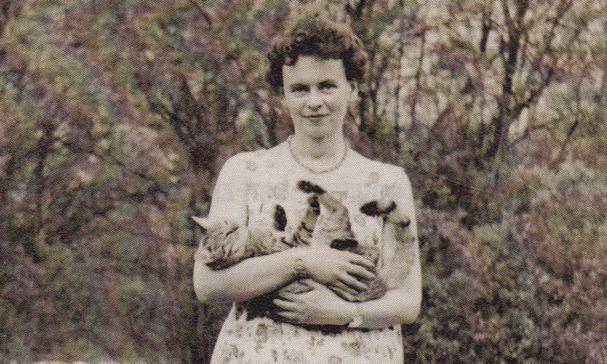They mocked her for being a countryman: Who is Marlen Haushofer?
Her works, which did not make much noise during her lifetime, attracted attention only after her death, due to the influence of the women's movement and women's literature research in the 70s.

(11 April 1920- 21 March 1970)
Marlen Haushofer was born on April 11, 1920, in Frauenstein, Upper Austria. After studying German Language and Literature in Vienna and Graz, she lived in Steyr with her husband and two children.
Her first text was published in 1946. In addition to novels, short stories, and novellas, she also wrote children's books and radio plays.
His writing career, which started with her stories published in magazines, gained momentum with her work Das Fünfte Jahr, published in 1952. This work was followed by Eine Handvoll Leben, Die Vergißmeinnichtquelle, Die Tapetentür, and finally Haushofer's novel Die Wand, perhaps the most read in the world. She received the Arthur Schnitzler Award in 1963 for her story Wir Töten Stella.
He contracted bone cancer and spent the last years of her life in the shadow of this disease; She died in Vienna on March 21, 1970.
Marlen Haushofer (born Marie Helene Frauendorfer; 11 April 1920 – 21 March 1970) was an Austrian author, most famous for her novel The Wall (1963).
Although she was deemed worthy of the State Literary Encouragement Award in 1953, the Arthur Schnitzler Award in 1963, and the Austrian State Literature Prize in 1968, in addition to many literary awards, the importance of her work was understood only after her death, when the women's movement and women's literature research discovered her and her books had achieved great success. Today, she is considered one of the pioneers of modern women's literature, along with Ingeborg Bachmann.
The novel “Die Wand” attracted attention and gained great respect when it was published in 1963. This extraordinary masterpiece was filmed in 2012 by director Julian Roman Pölsler; Famous actress Martina Gedeck played the leading role.
What is the subject of the novel “Die Wand”?
A middle-aged woman wants to spend a few days with her cousin Luise and her husband Hugo in their hunting lodge in the mountains. After their arrival, the couple goes for a walk to the neighboring village but does not return. The next morning, the woman hits an impenetrable, invisible, transparent wall: Behind the wall, the solidity of death prevails. The woman tries to establish an order and direct her "new life" in order to survive in the middle of a narrow and limited piece of nature, isolated from the rest of the world, with a dog, a cow, and a cat approaching her.
Who is Marlen Haushofer? (1920-1970)
He was born in Northern Austria, her father and mother's family were foresters. As a child, Marlen is a lively, active, cheerful girl; She enjoys the freedom of being outdoors and wandering through forests. Later, she would describe her years until the age of 10 as peaceful years, heaven. Her mother tries to escape by becoming a servant to a rich, noblewoman and travels the world to escape the fate of the forest family. Marlen is sent to the nun school at the age of 10. One of the brightest female students in her class, she misses her home and falls into depression. Her studies are interrupted when she goes to a sanatorium. After completing school, she performs a year of public service on the eastern border of the German Empire.
In 1940, she began studying philosophy in Germany and history in Vienna. Here she met Manfred Haushofer, who was studying medicine, and they got married in 1941. Before marriage, Marlen had a son with a German student. Manfred accepted this illegitimate child, but even after they had their own son in 1942, they did not take her with them for a long time, settling in the Upper Austrian region. Even if her husband opens a dentist that makes money, they will never be good again. Marlen's husband proves her despair when she starts chasing money, wealth, and other women. She gets divorced, but they later remarry. While Marlen tells her friends that she is not blind to her husband's mistakes and that she does not experience love, she says that you cannot be divorced in the town called STEYR and explains why she married again.
